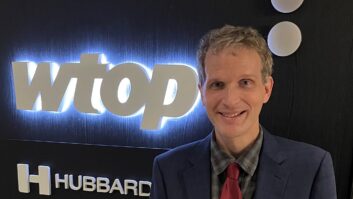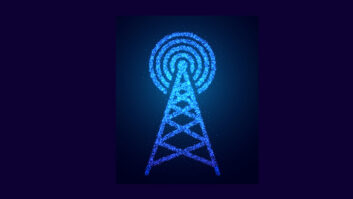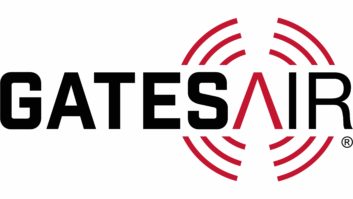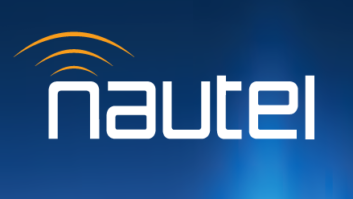If all-digital FM HD Radio in its full glory is ever rolled out in the United States, perhaps test data revealed in Las Vegas during April’s NAB Show will be a crucial first step.
A highlight of the Broadcast Engineering and Information Technology Conference will be NAB Pilot’s “All-Digital FM Field Test Project” on Sunday April 8, from 1:50 to 2:10 p.m. in Room N255 of the North Hall of the LVCC.
The presentation may be only 20 minutes long but it promises a deep dive of results from the first extensive field testing of such service. Until now only limited field testing of all-digital HD Radio has been conducted, with low transmit power (100 watts) and reception equipment in non-real world test conditions.

Pilot, a technology and innovation initiative of NAB, conducted field tests in early 2018 with Beasley’s KKLZ(FM) in Las Vegas serving as the test station. A live demo of all-digital FM signals from KKLZ will be broadcast during the show. (The digital audio channels will be on even-numbered frequencies, so most receivers cannot get these. Attendees can go to the Pilot booth in the Futures Park section of the show where receivers will be tuned to the even-numbered channels)
Virtually all HD Radio receivers in the marketplace will work not only with the familiar “hybrid” HD Radio signals but also with a more advanced, all-digital HD Radio signal. Crucially, however, an all-digital HD signal is not receivable on analog-only radios.
Xperi, parent company of HD Radio, recently reported that 50 percent of new cars sold in the U.S. are equipped with HD Radio receivers. But a much higher penetration would be required if radio station leaders are ever seriously to consider utilizing all-digital HD FM.
Martin Stabbert, VP of engineering for Townsquare Media, will moderate this session, which features David Layer, NAB VP of advanced engineering; Russ Mundschenk, senior field test & implementation manager for DTS/HD Radio; and Milford Smith, partner in Smith, Khanna and Guill.
Radio World previewed the session with Layer; while he said the test results were still being analyzed, he provided valuable insight into the testing process.
Radio World: There have been previous tests of all-digital FM in the field. What makes this testing different?
David Layer: Tests have been conducted previously by Xperi and others in the U.S., Korea and Norway. Ours is the first test, however, to use commercially-available consumer receivers and a high-power Class C 100 kW radio station. This was also the first test project to test both the standard MP5 all-digital configuration, which is specified in the NRSC-5 digital radio standard, and the HD Multiplex all-digital configuration developed by Nautel.
RW: Can you summarize results from any earlier tests of all-digital FM?
Layer: Two earlier studies come to mind, which were primarily field tests, not lab tests. I would refer you to the 2011 NAB Broadcast Engineering Conference Proceedings for an article titled “Field Trials of Digital Radio Technologies: DAB, DAB+, T-DMB Audio, HD Radio and DRM+,” published by a group of authors from ETRI, which is a non-profit government-funded research institute in Korea. This article is a good summary of some work done back in 2010, which involved testing of a number of digital radio technologies. There was also a U.S. contribution to the International Telecommunication Union, Radiocommunication Sector (ITU-R) in 2014 on tests conducted in Norway using a 100-watt transmitter. In that test, the digital signal at 100 watts provided good coverage of the metropolitan area and met or exceeded analog coverage.
RW: What groups were involved with the recent fields tests in Las Vegas and when were they conducted?
Layer: Tests were conducted during the weeks of Jan. 22 and Feb. 12. Our partners in the project included Beasley Broadcast Group, Xperi, Nautel, Townsquare Media and Avis Budget Group, which provided the test vehicles. Also working with NAB Pilot was consulting engineer Milford Smith from the engineering firm of Smith, Khanna and Guill. [Smith also has long been active on the National Radio Systems Committee.]
RW: What signal strength and contours were measured? How were the all-digital field tests conducted?
Layer: We operated the test station at a variety of power levels and in a variety of configurations, which I will be describing in more detail during my presentation at the conference. One of our main considerations was to maintain comparable power levels across tests so that valid comparisons of the results could be made.
RW: What types of consumer radios were tested?
Layer: Our primary radio used for coverage tests was the HD Radio receiver included in the 2018 Ford Explorer. Through our rental car partner Avis Budget Group, we were able to lease four identical Explorers and the radios in these vehicles were connected to our coverage test platform with software provided by Xperi. For some of the coverage tests, we also used an additional HD Radio test receiver built by Xperi. In addition, we did reception tests using a Sparc tabletop radio as well as a Sparc SHD-TX2 portable.
RW: Was there a separate testing program for inside home listening or only outdoor mobile?
Layer: This was principally a mobile test program to assess all-digital coverage and compare it to hybrid digital coverage. Some stationary, inside listening was done but the results are more anecdotal.
RW: How many channels of HD Radio were tested?
Layer: It’s important to remember that the benefit of all-digital FM radio is not just additional audio channels. The additional data capacity that can support more audio will also support advanced data services, and in the long run those data services may be of the greatest interest. During the field test, we focused on additional audio channels since our test software is designed to measure coverage based on audio channel reception, and broadcast up to five audio channels on a single HD Radio signal, more than FM broadcasters are currently supporting with hybrid digital services.
RW: Was interference between HD and analog made better or worse by using the full digital version?
Layer: The MP5 all-digital mode of operation that we were testing did not create any additional interference compared to hybrid digital services currently in use.
RW: What power level for all-digital needs to be established so that the existing FM allocations scheme for station coverage capabilities is maintained and new interference is mostly precluded? In other words, what amount of power is necessary in the all-digital mode to “equal” the coverage of the analog FM signal?
Layer: My first comment here is that any possible move by broadcasters to go all-digital is a long way off.
Regarding power levels, one of the areas where work is needed is that of allocation rules for all-digital and there will be plenty of time to study that.
RW: Do you think any existing stations would be willing go all-digital FM before in-vehicle digital radio penetration reaches 80 or 90 percent?
Layer: I think it depends on the business opportunities available. One of the reasons we are starting to explore all-digital FM operation is that broadcasters may have an opportunity to provide data services to so-called connected cities and to the autonomous vehicle infrastructures that are now being contemplated. All-digital FM broadcast signals offer an extremely robust and redundant data channel, sure to be attractive to users and competitive with the alternatives.






